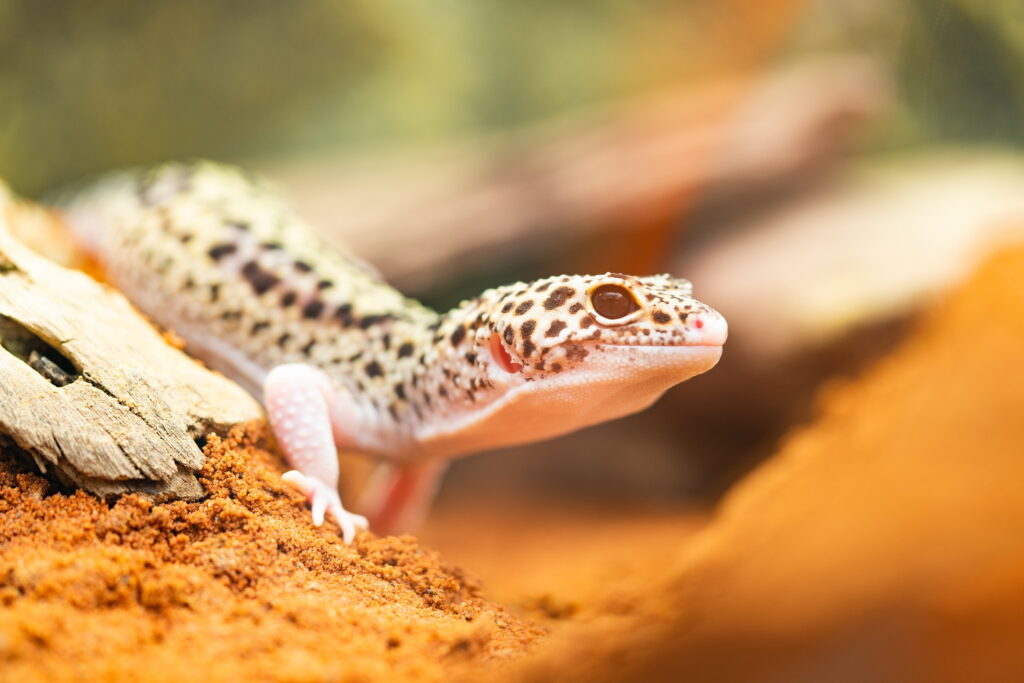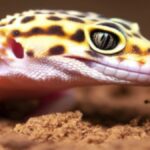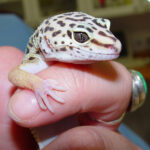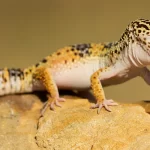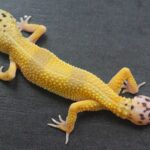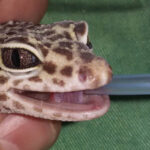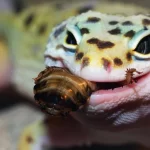Squeaks
Leopard geckos are often heard making squeaking noises. A squeak is a short, high-pitched sound – for example when two balloons are rubbing together. In many animals, squeaks are used to communicate with each other. With Leopard geckos, squeaks are generally heard while in a calm, content state.
Clicks
Unlike squeaks, clicking noises are often seen with threatened and annoyed Leopard geckos. It is often heard when handling baby Leopard geckos. Bathing or unfamiliar environments and/or a new friend (e.g. in the case of a new Leopard gecko) can also trigger this behaviour.
Chirps
Similar to squeaking, chirping is often heard when a Leopard gecko is unhappy about something. Some keepers report that they heard chirping noises as if it is a call – to something like an empty food bowl, while others report that it goes with being startled or surprised.
Barks
Barking is another noise that is often heard in situations where a Leonard gecko might feel threatened. Similar to the barking sounds that dogs make, barking sounds in Leopard geckos are similar to squeaks, but a little hoarser.
Squeals
Yet another distressful sound that Leopard geckos make is squealing. A squeal is a high-pitched sound, as a scream of a child, or noisy worn-down brake pads. This sound mostly associated with being in defensive mode i.e. after being frightened or startled.
Leopard gecko threatening noises
Most of the noises Leopard geckos make are because of threatening behaviour. They include barks, squeals and chirps. Other indicators that a Leopard gecko might feel threatened includes inflating its body, opening its mouth, lifting the head and body higher off the floor fast tail movements. Before or after making noises, a Leopard gecko will also often lash out to its perceived threat.

